“Danger is Imminent:” The Beginning of the Gettysburg Campaign
Posted By Jake Wynn on June 15, 2013
As General Robert E. Lee’s Army of Northern Virginia began its trek up the Shenandoah Valley in early June 1863, the objective mystified many in the North. Some thought he had aims on Washington or Baltimore, while others thought he was taking his army further north, into the Union’s second most populous state. Pennsylvania looked like a great place for Lee to lead his army of more than 70,000 men, allowing them to live off the enemy’s country and allow for a summer harvest in war-ravaged Virginia.
As his Confederate army left its position near Fredericksburg, Virginia inthe beginning of June, they left behind an area where they had achieved two great victories over larger Union armies. In December 1862, Lee’s troops crushed an ill-fated and poorly planned assault on the town of Fredericksburg by Union forces under the command of General Ambrose Burnside, resulting in more than 13,000 Union casualties.
Following months of desertion and slogging through the Virginia winter mud, the Union forces again began action in late April 1863, under a new commander. General “Fighting Joe” Hooker took the Army of the Potomac across the Rappahannock River west of Fredericksburg in a new attempt to destroy the Army of Northern Virginia.
Instead, Lee’s smaller Confederate army outflanked and outfought the hapless Union army in a bloody battle at a small crossroads community known as Chancellorsville, in the “Wilderness” of Virginia. The Confederate army then pulled out of this region of Virginia in early June 1863, and began its march west towards the Shenandoah Valley and the cover the Blue Ridge mountains provided from the prying eyes of Hooker’s Union cavalry. He succeeded and began his march up the Valley, rolling up Union forces stationed in the upper end of the Shenandoah.
The reaction to the news sent many in the southern Pennsylvania into a panic. The Union garrison at Winchester, Virginia collapsed after fighting on June 13-15. The remnants of that force rushed into the Cumberland Valley and through the towns and villages of Franklin County. Diarist Amos Stouffer of Chambersburg noted on June 15 that “excitement is very great about the rebs.” Rumors had spread throughout this region that the Confederates had already occupied Hagerstown, Maryland.
“Reports of an engagement near Winchester. Our town in an uproar. Government property being loaded up and taken away. The drum calls for volunteers.” Sixty-seven year old Chambersburg resident William Heysel recorded in his diary on June 14. The next day, the streets of the town filled with the wagons of hundreds of refugees as they fled north towards Carlisle.
![]()
Later in the same entry, Heysel wrote “Suddenly about two hundred more wagons, horses, mules, and contrabands all came pouring down the street in full flight. Some of them holloring the Rebels are behind us. Such a sight I have never seen, or will never see again. The whole town is on the sidewalks screaming, crying, and running about. They know not where.” Heysel vowed to stand his ground and defend his family and his property.
Rachel Cormany mentioned the threat of invasion briefly in a diary entry on June 14. “Some excitement about the rebels come. Evening the excitement pretty high,” the Chambersburg woman wrote. The next day she captured some of the chaos that enveloped the town of more than 5,000 people.
“This morning pretty early Gen. Milroys wagon train (so we were told) came… There really was a real panic. All reported that the rebels were just on their heels. Soon things became more quiet–& all day government wagons & horses were passing through. For awhile before dark the excitement abated a little–but it was only like the calm before a great storm. At dusk or a little before the news came that the rebels were in Greencastle & that said town was on fire. Soon after some of the our guard came in reporting that they had a skirmish with them. Soon followed 100-200 cavalry men–the guard. Such a skedadling as their was among the women & children to get into the houses. All thought the Rebels had really come. The report now is that they will be here in an hour.”
A special dispatch from the New York Times correspondent in Harrisburg reported a simple, yet disturbing message on the evening of June 15.
June 15 would prove to be just the first day in a long, hot month for the citizens of Central Pennsylvania. Lee’s army, in truth, remained about 40 miles to the south, battling with Union forces around Winchester. Small groups of an advanced cavalry screen would soon enter Chambersburg. This fed the flying rumors that the Southerners were soon to enter the Keystone State en masse. The farmers and merchants of Franklin County would soon face an enemy invasion. Few of them could ever imagine that they would witness one of the most vital and perilous times the Union would face in the Civil War.
Keep up with the events of the Gettysburg Campaign through the words Central Pennsylvanians who witnessed it by continuing to follow the Civil War Blog by the Gratz Historical Society.
Diaries and pictures for this post came from the Valley of the Shadow Collection by the University of Virginia.
Pictures also come from the Library of Congress Collection of Civil War Images
 ;
;
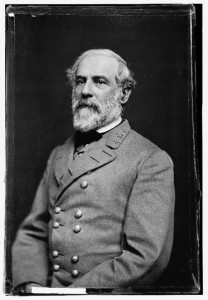
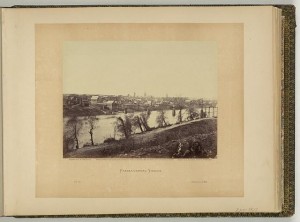
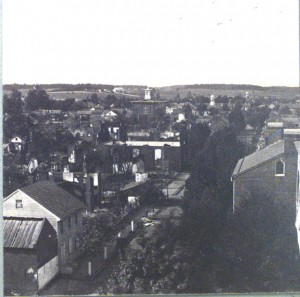
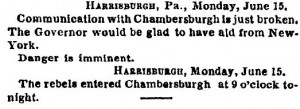
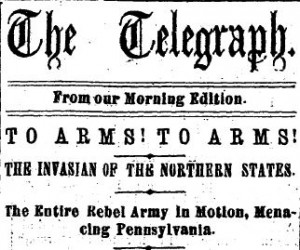


Comments